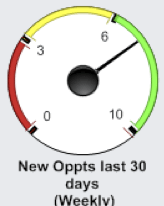Oilweek, January 2012
Progress versus Happiness
Scott Morris, RESULTS.com
Traditional management suggests that in order to create a productive workplace, we need to have happy, satisfied employees. In my 30 year career I have participated in, and helped facilitate the creation and deployment of, a number of “Employee Satisfaction Surveys”. From these surveys employers build strategies around employee communication, performance management, compensation, working environments, and a host of other initiatives in an attempt to positively influence overall employee satisfaction.
All of this is based on the assumption that satisfaction = productivity; that if we have happy employees, they will be engaged and productive, and output and value creation will go up.
But does a happy, satisfied workforce truly lead to higher productivity?
After examining 12,000 daily diary entries from workers, authors Teresa Amabile and Steven Kramer, in their book “The Progress Principle”, reached a fascinating conclusion. Namely, that the most powerful motivating factor for employees is seeing tangible progress whilst performing meaningful work.
This proposition turns the traditional management assumption on its head. Satisfied employees don’t give us productivity. Rather, productive employees create their own satisfaction.
Steps not Leaps
We set long term or Big Hairy Audacious Goals (BHAG© Jim Collins) and work diligently toward their achievement. But because these are set so far out in the future it is extremely rare that we ever feel the thrill and satisfaction of achieving such long term goals.
On the other hand, “small wins” can happen each and every week – as well as at the end of every quarter. These “small wins” are the incremental steps toward our longer term goals.
The research showed that when people can see tangible progress and experience “small wins” often – they become even more engaged and productive.
Defining Progress and Performance by Role
I was speaking to a business owner of a mid-sized firm recently who was complaining that she wasn’t getting good performance out of her newly appointed CEO. The CEO wasn’t performing to the acceptable level. But when I asked about the CEO’s role scorecard, and the associated performance measures for the role, I got a blank stare. There had never been a formal and written definition of “acceptable level”.
Performance and progress need to be measured to a standard, and that standard must be established at the outset. A one-page role scorecard for every role in the organization, defining objectively the key performance metrics and standards, can provide the clarity needed.
It surprises me how common this scenario is. Managers recruit talented people, but somehow forget the importance of defining the role in terms of objective, measurable standards.
A similar approach can be used with other strategic priorities and projects within the organization that may be outside the ongoing ‘business as usual’ role definitions. Assigning clear ownership for the priority or project, and then the key measures-of-success sets the framework for accountability and performance.
Recognize and Reward
Last quarter we hosted an event and invited Sean Durfy, former CEO of Westjet, to speak to a group of our clients. During his presentation, Sean shared a variety of his “lessons learned” about leadership and company cultures, including a recurring theme in several research studies about what employees want from an employer. The top three motivators included:
- Appreciation
- Feeling ‘In’ on Things
- Sympathy to Personal Problems
Unfortunately, most leaders don’t understand the power of recognizing and appreciating employees as they make visible progress toward goal achievement. They understand the need to set clear goals, provide incentives, and support their staff – but underestimate the importance of showing tangible progress every step of the way.
In most of our client organizations, the forum for appreciation and recognition of progress is the weekly execution meetings. This regular meeting rhythm provides a place to share good news, tell core values stories, and update progress on key performance standards and priorities. For example, there is nothing better than seeing the excitement the marketing team has when they move the average number of leads per month from 25 to 30.

This approach is also supported by visible Key Performance Indicators (KPIs). Software is now available to display KPIs in dashboard form, and make that dashboard available to everyone on the team or in the whole organization. Every employee can understand how to read a dashboard, and that moving a dashboard dial from the red zone, through yellow, and into green helps move the business forward.
The right amount of pressure
More information. More interruptions. More technology. We seem to be running faster and faster just to keep up. But are we really working on the most important things that will move the business forward – or are we just being busy? Being busy on trivial tasks reduces creativity where it counts – we have less brain power to devote to the really important things.
The Amabile and Kramer study also showed that people actually perform worse when they are stressed out, or scrambling to meet tight deadlines. People become less creative when over-extended and under pressure. It seems that people are happier and more creative when they are held accountable to make continuous progress on their important goals in a series of steps.
Thus, it is vital for leaders to keep people focused on the important things (KPI’s / Current Strategic Priorities), to protect them from trivia and constant distractions, and hold them firmly accountable for making progress on their goals every week.
As we like to say with ourselves and our clients, business execution is all about “The 1 thing”. What 1 task could you do and check off as complete in this coming week that would move this goal, project, or KPI forward? Making progress on meaningful goals and objectives is the underpinning of a productive AND happy workforce.

